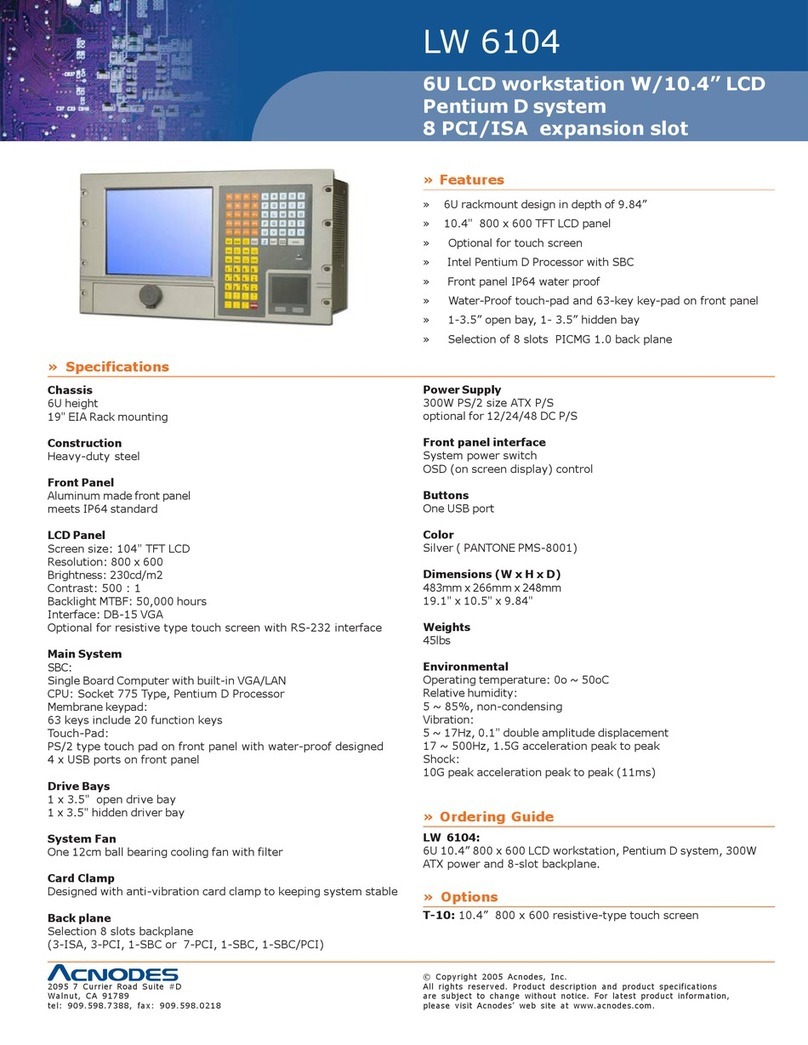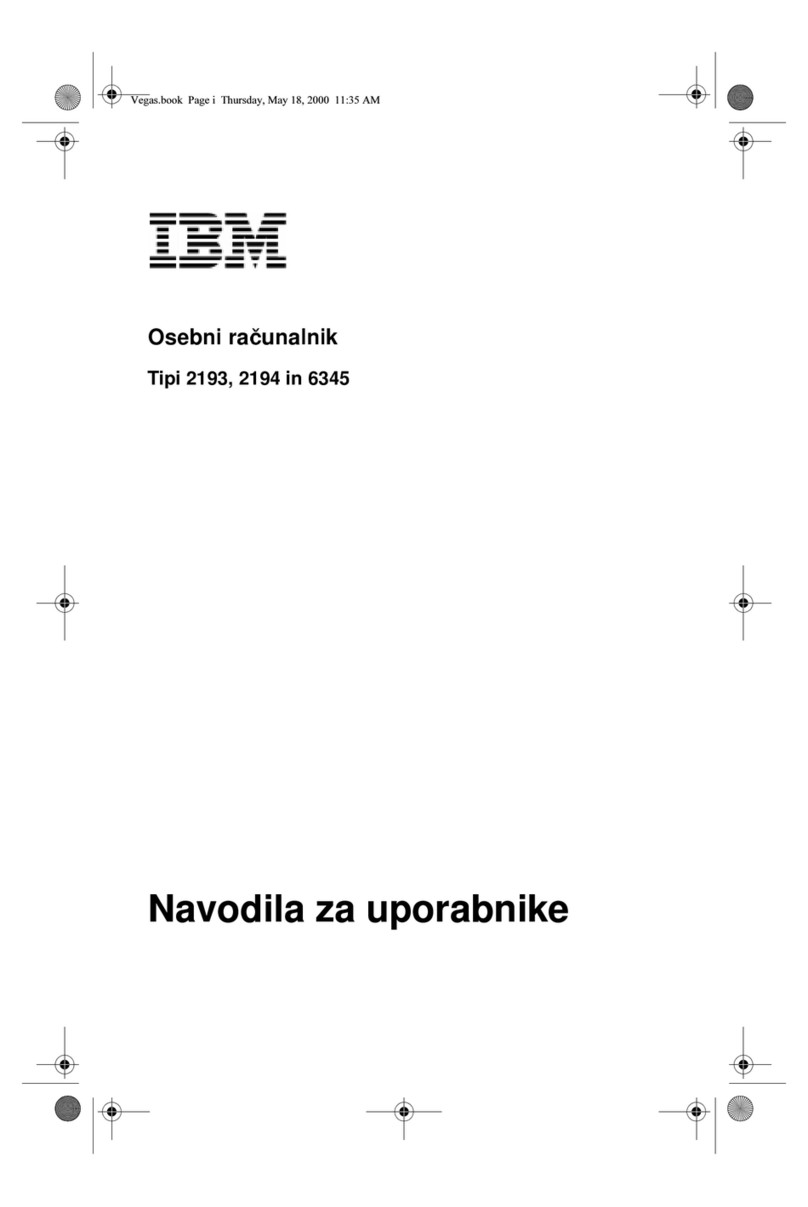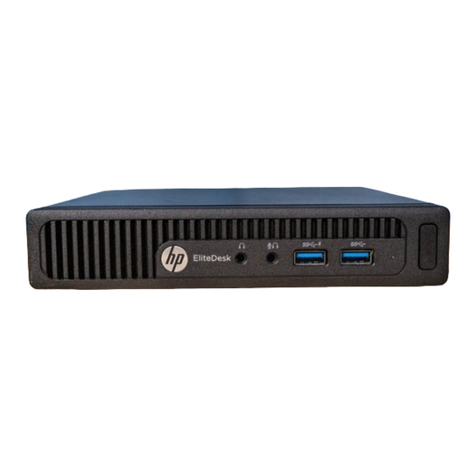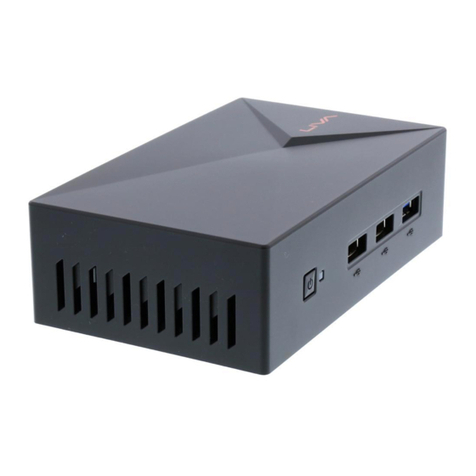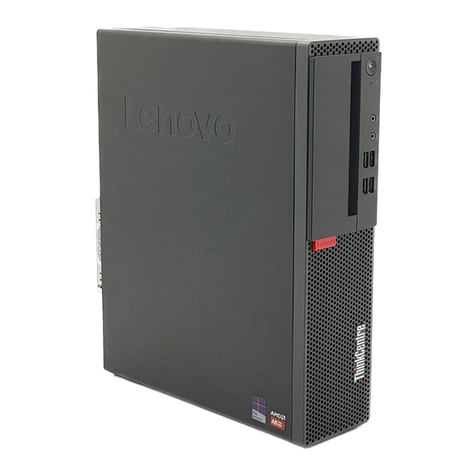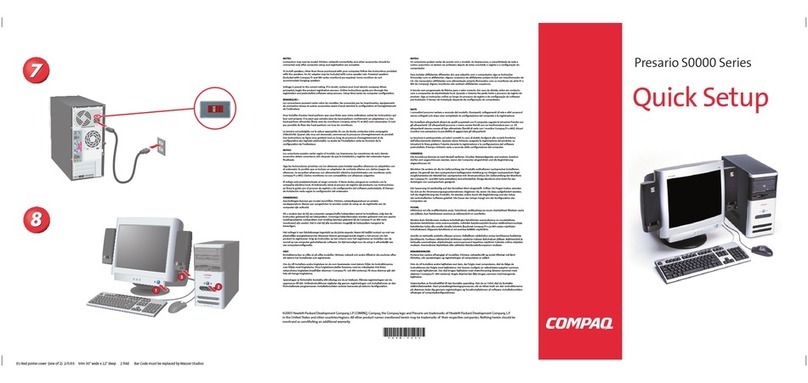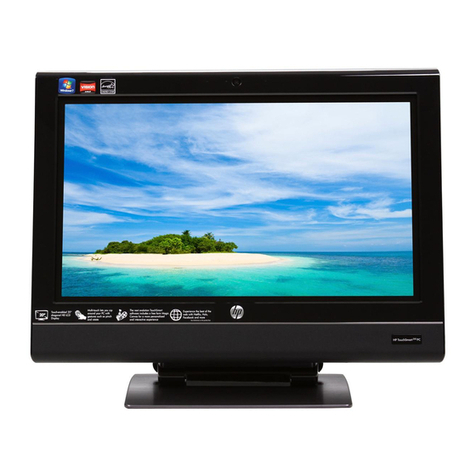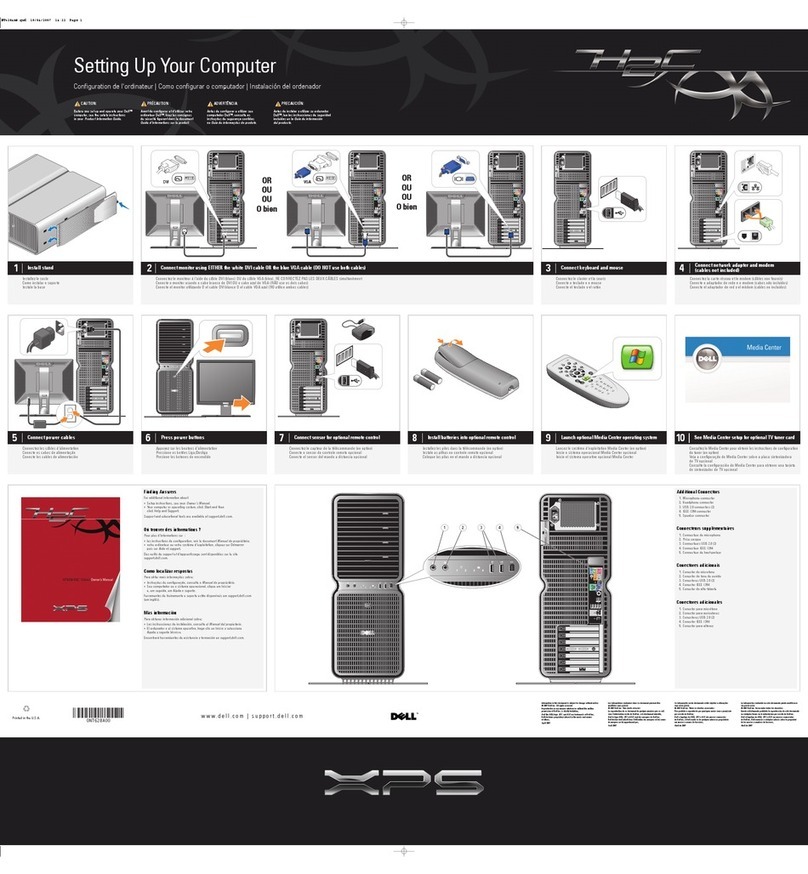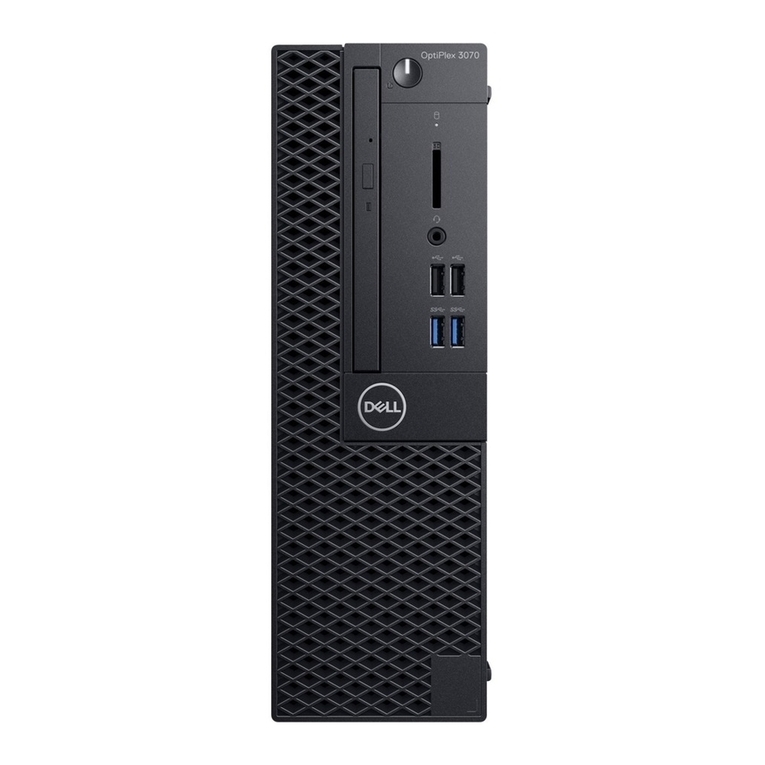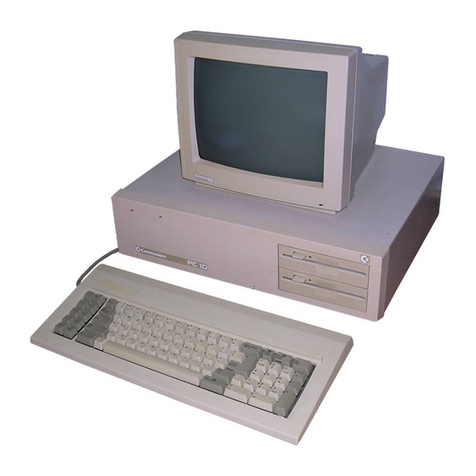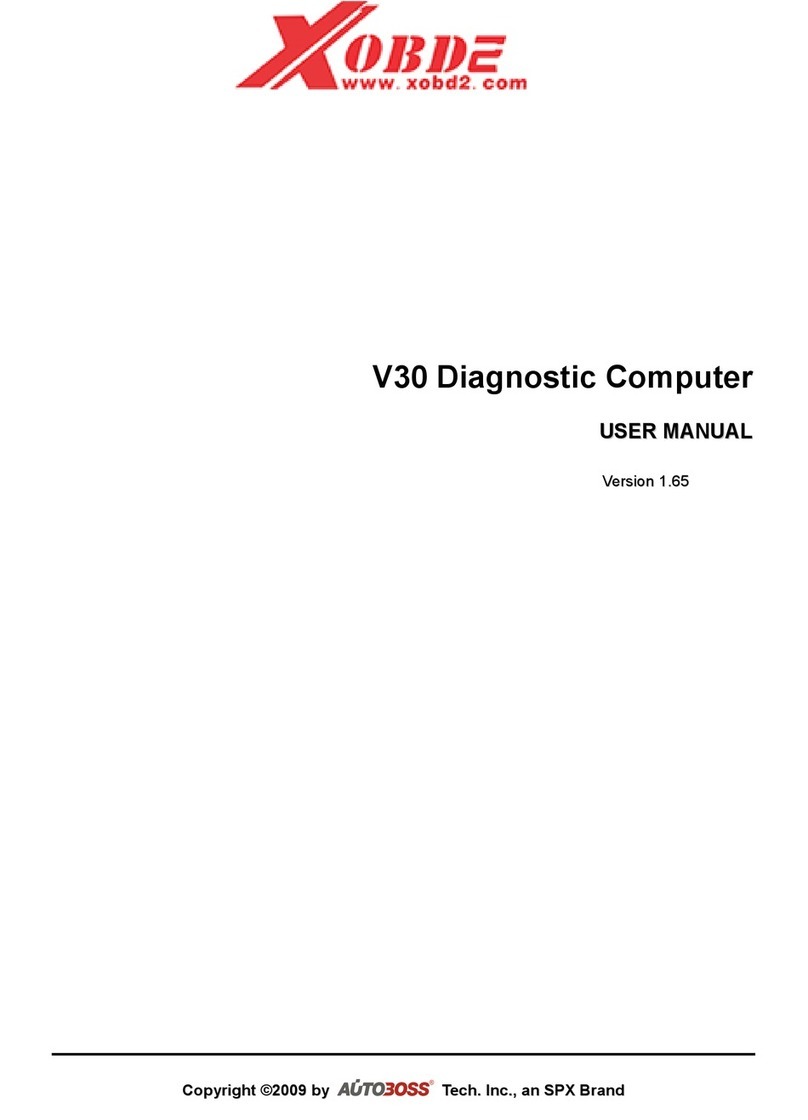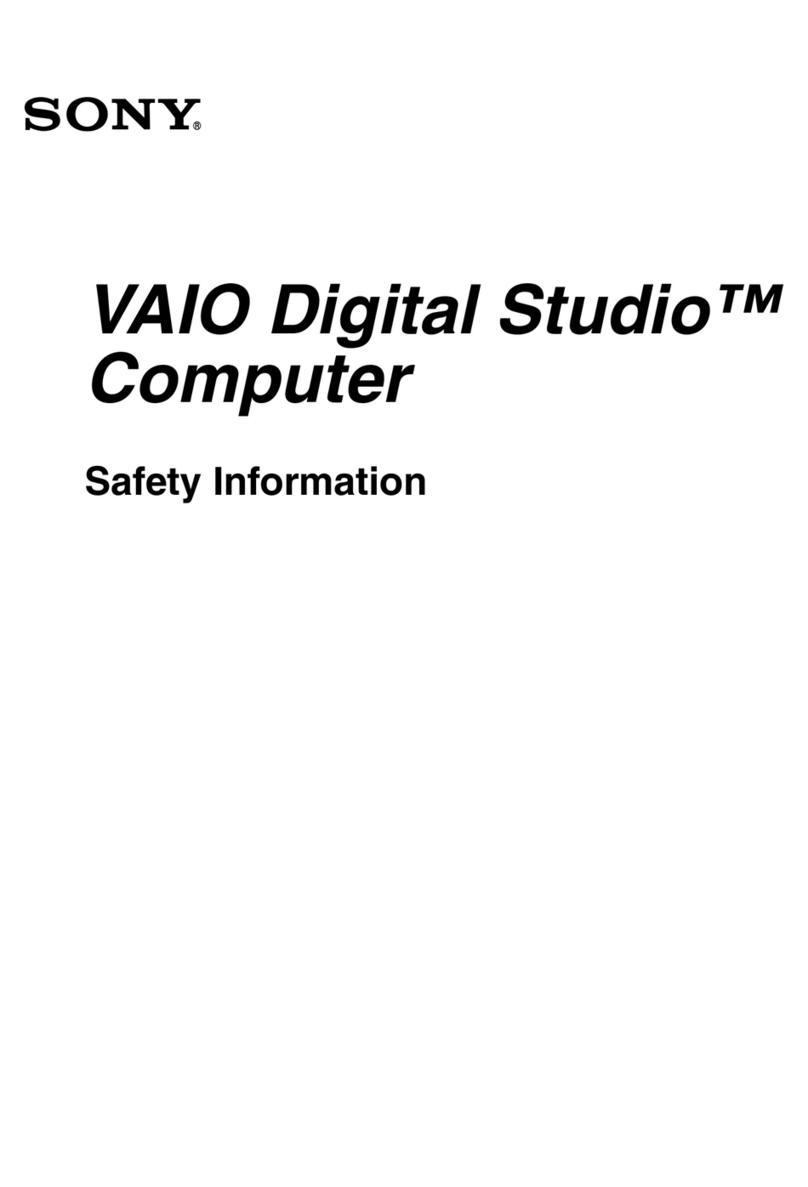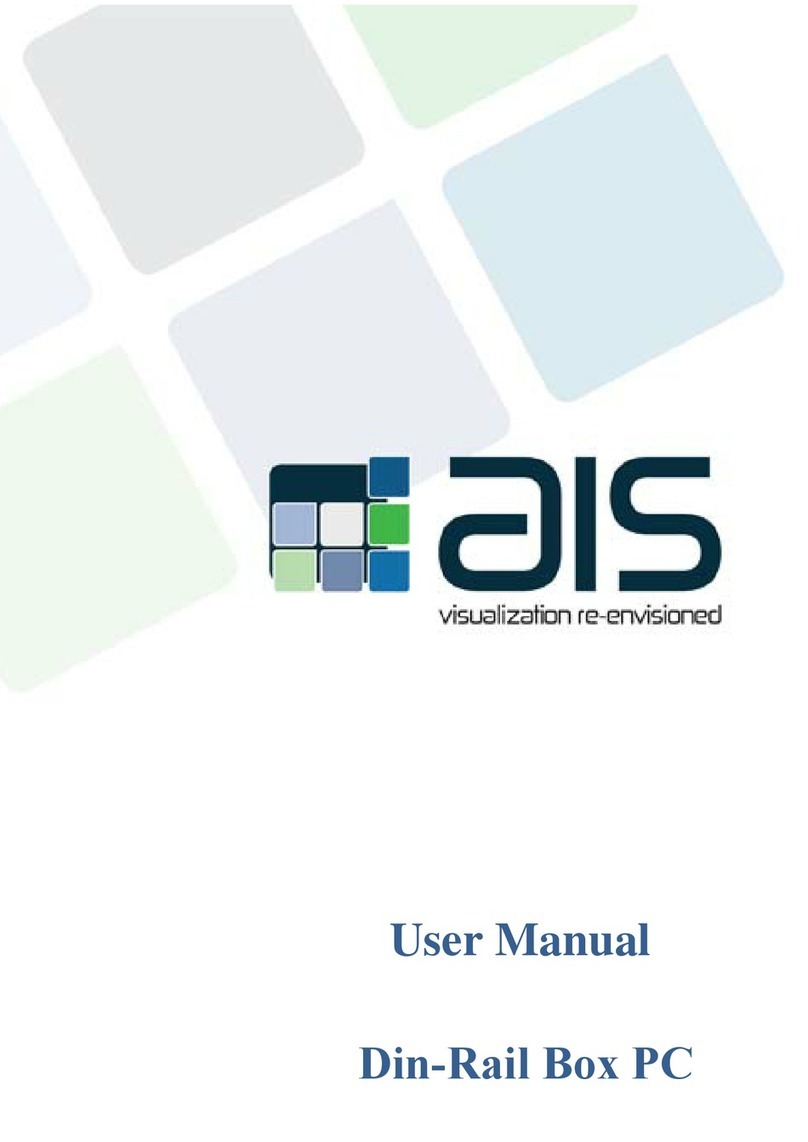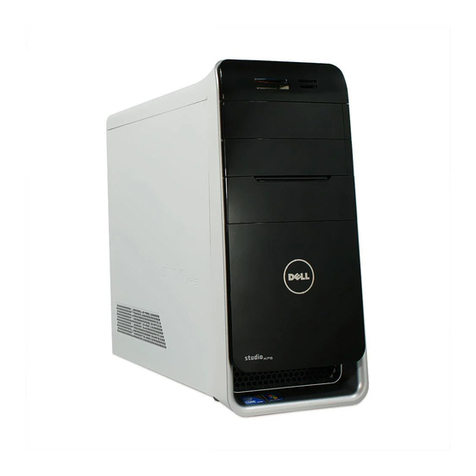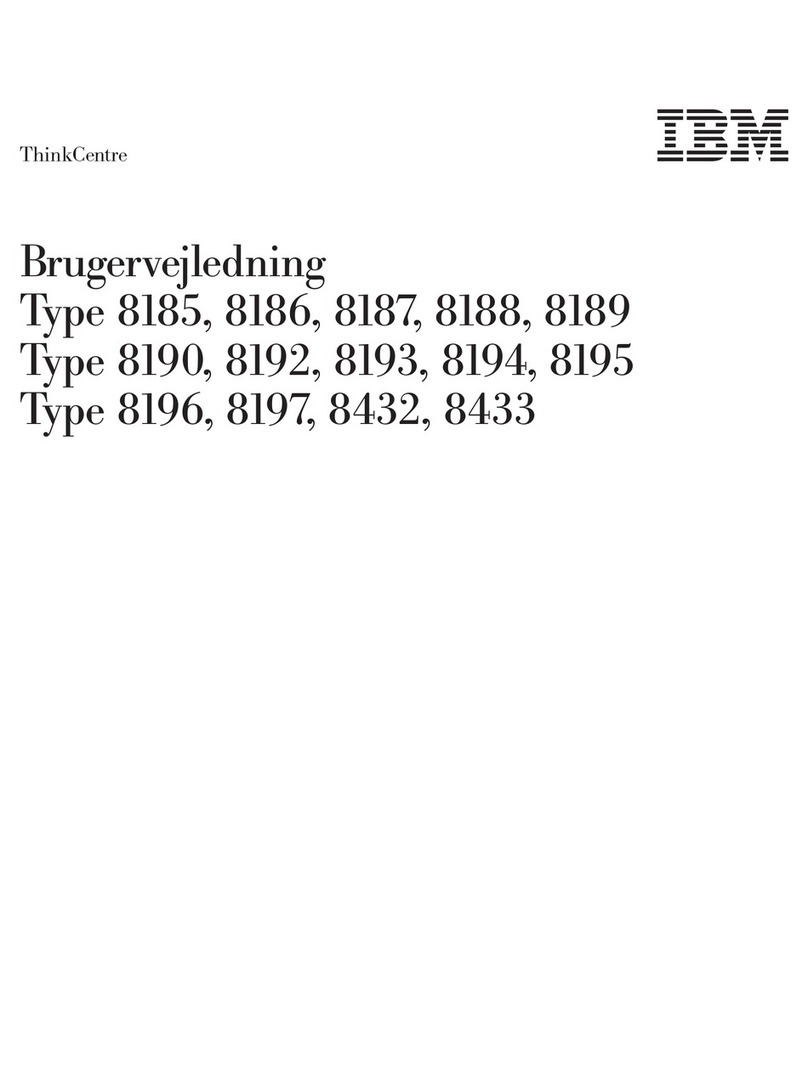Micro Computer Specialists IRV-686H User manual

User's Manual
for the
IRV-686H Single Board Computer with VGA
MCSI PART NO. 88300 IRV-686H
All-In-One Single Board Computers
For Industrial/Embedded Systems Applications
MICRO COMPUTER SPECIALISTS, INC.
"The Embedded PC Specialists"
2598 Fortune Way
Vista, CA 92083
U.S.A.
Voice: (760) 598-2177 - Fax: (760) 598-2450
Technical Support BBS: (760) 598-2179

Revised April 6, 1999
Revision 1.6
Changes are made periodically to the information contained herein; these changes will be
incorporated into new editions of this document.
Requests for copies of this publication or the product(s) which it describes should be made to MCSI.
While every effort has been made to insure that this document and its accompanying product(s) are
free from defects, MCSI, its distributors, representatives, and employees shall not be responsible
for any loss of profit or any other commercial damage including, but not limited to, special,
incidental, consequential, or other damages occasioned by the use of this product(s).
In the event of defect the buyer's sole recourse is to receive a refund or replacement unit at MCSI's
discretion if notified within the time period covered by the product warranty.
1998 MCSI Micro Computer Specialists, Inc. All Rights Reserved.
PROMDISK is a registered trademark of Micro Computer Specialists, Inc.
Pentium is a registered trademark of Intel Corporation
IBM is a registered trademark of International Business Machines Corporation.
PC/XT & PC/AT are registered trademarks of International Business Machines Corporation
MS-DOS is a registered trademark of Microsoft Corporation.
All other trademarks are the properties of their respective holders.

PREFACE
This manual provides information about the MCSI IRV-686H All-In-One Single Board Computer.
This information is intended for users who must implement IBM PC/AT compatible computer
solutions to a wide variety of applications which cannot be satisfied using conventional desktop
computers. This manual assumes that the reader has a good understanding of MS-DOS and the
standard IBM PC/AT compatible architecture. For more information on the IBM PC compatible
hardware and software architecture, refer to any of the many books available on the subject. A few
suggestions are listed below:
•Advanced MS-DOS Programming, Microsoft Press
•Programmers Guide to the IBM PC, Microsoft Press
•Programming the 80386, Sybex
•Undocumented DOS, Addison Wesley
INVENTORY CHECKLIST
The complete IRV-686H All-In-One Single Board Computer package consists of the following:
IRV-686H All-In-One Single Board Computer
SIS-5598 VGA and E2Key Software Utilities
PROMDISK-Chip Software Utilities with ROM-DOS ver 6.22 (optional)
This Manual
If any of the above is missing or appears to be damaged, inform MCSI immediately.


Table of Contents
Section 1 - Introduction___________________________________________________________________ 1
Features.................................................................................................................................................... 1
Section 2 - System Description_____________________________________________________________ 3
Processor.................................................................................................................................................. 3
System Memory (DRAM)....................................................................................................................... 3
Cache Memory ........................................................................................................................................ 3
DMA Controller ...................................................................................................................................... 4
Interrupt Controller ................................................................................................................................ 4
Timers....................................................................................................................................................... 5
Clock/Calendar and CMOS RAM......................................................................................................... 5
Keyboard Port.......................................................................................................................................... 5
Mouse Port............................................................................................................................................... 5
Speaker Port............................................................................................................................................. 5
Reset Switch............................................................................................................................................. 5
Printer Port .............................................................................................................................................. 6
Serial Ports............................................................................................................................................... 6
Floppy Disk Port ..................................................................................................................................... 6
IDE Hard Disk Port................................................................................................................................. 6
VGA Display Port ................................................................................................................................... 6
WatchDog Timer..................................................................................................................................... 6
Optional PROMDISK-Chip Disk Emulator........................................................................................... 7
PC/104 Compatible Interface Port......................................................................................................... 7
Universal Serial Bus Port........................................................................................................................ 7
IrDA Infrared Interface Port................................................................................................................... 7
Flash EPROM BIOS................................................................................................................................. 7
E2Key 1K-bit User EEPROM.................................................................................................................. 7
Section 3 - Setup_________________________________________________________________________ 8
Section 4 - Using the PROMDISK-Chip Disk Emulator________________________________________ 9
Using ROM-DOS and Other Disk Operating Systems......................................................................... 9
PROMDISK Low Level Format.............................................................................................................. 9
Section 5 - Installation____________________________________________________________________ 10
Installing the SIMMs............................................................................................................................... 10
Installing the CPU ................................................................................................................................... 10
Installing the PROMDISK-Chip ............................................................................................................. 10
Completing the Installation.................................................................................................................... 11
Appendix A - Specifications_______________________________________________________________ 12
Appendix B - Board Outline ______________________________________________________________ 13
Appendix C - Memory and I/O Maps______________________________________________________ 14
Appendix D - Connectors_________________________________________________________________ 15
Appendix E - Configuration Jumpers_______________________________________________________ 20
Appendix F - BIOS Error Beep Codes ______________________________________________________ 22


1
SECTION 1 - INTRODUCTION
The MCSI IRV-686H Pentium/MMX All-In-One Single Board Computer (SBC) contains all the basic
elements found in a high-performance IBM PC/AT compatible desktop computer system plus some
unique features which make it ideally suited for industrial applications. The most outstanding
features include: An optional 32MB PROMDISK-ChipDisk Emulator, a PCI EIDE hard disk port to
support 2 EIDE drives, a high performance PCI VGA Video controller and graphics accelerator, a
high performance multi-I/O controller, a WatchDog timer, a 1K-bit E2Key memory for user data, and
a PC/104 expansion port. The board uses the SIS-5598 Chipset with integral VGA controller and
graphics accelerator. The multi-I/O controller includes: dual 16C550 UARTs, a floppy port, and a
SPP/EPP/ECP multi-mode bi-directional parallel port. The optional PROMDISK-Chip Disk
Emulator comes complete with ROM-DOS version 6.22, making it ideal for embedded diskless
applications. The 1K-bit E2Key memory is a non-volatile memory that is useful for storing user data,
such as: critical system parameters, terminal address, etc. The PC/104 expansion bus allows easy
installation of thousands of different PC/104 modules available world wide. The WatchDog timer is
ideal for controlling critical processes where unattended operation is essential. The IRV-686H
Pentium SBC was specifically designed to operate in extreme industrial environments, and has an
operating temperature range of 0oto 60oC.
The IRV-686H SBC is fully compatible with the IBM PC/AT ISA Bus which means virtually all the
software written for the IBM PC/AT will run on the IRV-686H SBC.
FEATURES
A complete list of features is listed below:
•IBM PC/AT Compatible Plug-in Computer
•Supports 233MHz Pentium/MMX, AMD K6-2 and Cyrix 6x86 type CPUs up to 333MHz
•Includes Zero Insertion CPU Socket
•SIS-5598 Chip Set
•AWARD Plug-n-Play Flash BIOS
•Passive Backplane Architecture
•Integral PCI VGA Controller and Graphics Accelerator
•128M-Byte Standard or EDO DRAM System Memory (2-72pin SIMMs)
•512KB Pipelined Burst Mode Secondary Cache
•PROMDISK-Chip Socket Supports 32MB PROMDISK-Chip Disk Emulator
•Dual Floppy Disk Port Supports Two 3.5" or 5.25" Drives up to 2.88M-bytes
•PCI Extended IDE Hard Disk Port supports up to Two Drives
•PS2/AT Compatible Keyboard Port
•PS2 Compatible Mouse Port
•PC/104 Compatible Interface Port
•Two High Speed 16C550 Compatible RS-232 Serial Ports
•Multimode Bi-directional Parallel Printer Port
•Universal Serial Bus Port for future expansion
•Infrared Data Access Port for future applications
•DS12887 Clock/Calendar with Battery Back-up
•Low Power CMOS Design
•Half Size AT Plug-in Multilayer Board for Low EMI and High Reliability
•WatchDog Timer and Power Monitor
•On-board Mini Speaker
•Optional External Reset

2
•Optional Datalight ROM-DOS 6.22 Operating System

3
SECTION 2 - SYSTEM DESCRIPTION
The following sections describe the major system features of the IRV-686H All-In-One Single Board
Computer.
PROCESSOR
The IRV-686H Pentium SBC supports 100MHz to 233MHz Pentium/MMX, and the AMD K6-2
processor up to 333MHz. It also supports the Cyrix 6x86MX-PR266. The Pentium microprocessor
includes an on-chip 16K-byte unified instruction cache, an 16K-byte data cache, an internal high
performance math co-processor, and an enhanced 64-bit data bus. The on-board jumper selectable
clock generator and ZIF CPU socket makes upgrading to a higher performance CPU easy. Some of
the distinctive features of the processors include:
•64-bit External Data Bus
•32-bit Internal Architecture
•128M-byte Directly Addressable Memory Space
•Internal 14 Word by 32-bit Register Set
•Separate 8K-byte Data and Cache Memories (16K for MMX)
•On-chip Pipelined Floating Point Processor
•Integrated Memory Manager
SYSTEM MEMORY (DRAM)
The IRV-686H Pentium SBC features a shared memory which supports up to 128M-bytes of dynamic
random access memory (DRAM) organized as two banks of 32Mx36 including four parity bits. The
board will support either standard fast page mode or high performance EDO DRAM. The memory
is configured using two single in-line memory module sockets, which will accept 72-pin single in-line
memory modules (SIMMs) organized as 1MB, 2MB, 4MB, 8MB, 16MB, 32MB, or 64MB with a
maximum access time of 70ns. One megabyte of memory is shared by the video controller. The
following table demonstrates some of the most common memory configurations.
Typical Memory Configuration Table
Total Memory SIMM1 SIMM2
4M 1Mx36 Not Installed
8M 1Mx36 1Mx36
8M 2Mx36 Not Installed
16M 2Mx36 2Mx36
16M 4Mx36 Not Installed
32M 4Mx36 4Mx36
32M 8Mx36 Not Installed
64M 8Mx36 8Mx36
64M 16Mx36 Not Installed
128M 16Mx36 16Mx36
CACHE MEMORY
The IRV-686H SBC includes 512K-bytes of pipelined burst mode cache memory for high speed access
to blocks of data most recently read from main memory, including buffered data from the disk and
video memory. The cache memory will significantly increase system performance over that of a
conventional non-cached system.

4
DMA CONTROLLER
The IRV-686H SBC memory refresh and DMA functions are included in the System Controller chip
which includes the equivalence of two 82C37 DMA controllers. The two DMA controllers are
cascaded to provide four DMA channels for transfers to 8-bit peripherals (DMA1) and three channels
for transfers to 16-bit peripherals (DMA2). DMA2 Channel 0 provides the cascade interconnection
for the two DMA devices thereby maintaining IBM PC/AT compatibility. The DMA channel
assignments are listed below:
DMA Channel 0: Not Used (8-bit)
DMA Channel 1: Alternate for Multi-mode Parallel Port (8-bit)
DMA Channel 2: Floppy Disk (8-bit)
DMA Channel 3: Multi-mode Parallel Port (8-bit)
DMA Channel 5: Not Used (16-bit)
DMA Channel 6: Not Used (16-bit)
DMA Channel 7: Not Used (16-bit)
The DMA request (DRQx) and acknowledge (DACKx/) lines are available on the P1 98-pin edge
connector.
INTERRUPT CONTROLLER
The IRV-686H SBC has the equivalence of two 82C59A interrupt controllers included in the System
Controller chip. The controllers accept requests from peripherals, resolve priorities on pending
interrupts and interrupts in service, interrupt the CPU, and provide the vector address of the
interrupt service routine. The two interrupt controllers are cascaded in a fashion compatible with the
IBM PC/AT. The interrupt priority and assignments are shown below in descending order of
priority:
Highest IOCHCK/ Parity Check (Non-maskable)
IRQ0 System Timer (Not Available)
IRQ1 Keyboard (Not Available)
IRQ8 Real Time Clock (Not Available)
IRQ9 SVGA Controller
IRQ10 Not Used
IRQ11 Alternate for Serial Port 2
IRQ12 Alternate for Serial Port 1
IRQ13 Co-processor (Not Available)
IRQ14 Not Used
IRQ15 Not Used
IRQ3 Serial Port 2
IRQ4 Serial Port 1
IRQ5 Alternate for Parallel Port
IRQ6 Floppy Disk Controller
Lowest IRQ7 Parallel Port
The interrupt request lines IRQx and IOCHCK/ are available on the 98-pin edge connector except as
noted above.

5
TIMERS
The IRV-686H SBC has the equivalence of an 82C54 Programmable Timer included in the System
Controller chip. The 82C54 is a three channel Programmable Counter/Timer chip. The three timers
are driven by a 1.19MHz clock source derived from the on-board 14.31818MHz crystal oscillator.
The three timers are used as follows:
TIMER Channel 0: System Timer
TIMER Channel 1: Timer for DRAM refresh
TIMER Channel 2: Tone Generation for Audio
CLOCK/CALENDAR AND CMOS RAM
The IRV-686H SBC includes a Dallas Semiconductor DS12887 compatible real time clock/calendar
with 128 bytes of CMOS RAM and internal Lithium battery which provides over 10 years of data
retention when the system power is off.
The 128 byte CMOS RAM consists of 14 bytes used by the clock/calendar, and 114 bytes used by the
system BIOS.
Should your CMOS become corrupted, i.e. loss of battery power or accidentally clobbered, strange
errors may occur while attempting to run your programs. A jumper is provided to clear the CMOS
memory, refer to Section 3.0 for instructions on resetting the initial SETUP values.
KEYBOARD PORT
The IRV-686H SBC contains an IBM PC/AT compatible keyboard controller for interfacing to a
generic IBM PC/AT compatible keyboard. The keyboard controller assembles the serial data from
the keyboard into bytes and interrupts the CPU via IRQ1 after each byte is ready to be read. The
IRQ1 service routine reads port 60H to get the keyboard scan code and acknowledges by sending a
positive pulse to port 61H to clear the interrupt for the next byte. Refer to Appendix D for the
keyboard connector location and pin assignments.
MOUSE PORT
The IRV-686H SBC contains an IBM PS2 compatible mouse port for interfacing to a generic serial
mouse. The mouse port controller assembles the serial data from the mouse into bytes and interrupts
the CPU via IRQ1 after each byte is ready to be read. The IRQ1 service routine reads port 60H to get
the scan code and acknowledges by sending a positive pulse to port 61H to clear the interrupt for the
next byte. Refer to Appendix D for the mouse port connector location and pin assignments.
SPEAKER PORT
The IRV-686H SBC contains an on-board sub-miniature audio speaker to provide audio interface to
the user. Because of the small size of the speaker, the sound output is much reduced over that of the
larger speaker found in most desktop computers. A connector is provided to connect an external
speaker if the sound output is not sufficient. Refer to Appendix D for the speaker port connector
location and pin assignments.
RESET SWITCH
The IRV-686H SBC includes an on-board power detector and power on reset circuit to reset the
computer after power is applied, and to hold the computer reset during low power, brown-out
conditions. In addition, there are provisions for connecting an external, normally open, push button
reset switch. Refer to Appendix D for the reset switch connector location and pin assignments.

6
PRINTER PORT
The IRV-686H SBC contains a multimode parallel port which has the equivalence of an IBM PC/AT
Parallel Printer Port. The multimode parallel printer port supports the PS/2 type bi-directional
parallel port (SPP), the enhanced parallel port (EPP), and the extended capabilities port (ECP)
parallel port modes. The port can be configured as a standard IBM PC/AT compatible LPT1, LPT2,
or LPT3 printer port, or disabled completely using the CMOS Setup utility. Refer to Appendix D for
the connector location and pin assignments.
SERIAL PORTS
The IRV-686H SBC has the equivalence of two NC16C550 UARTs. The two UARTs can be configured
as standard IBM PC/AT RS-232C compatible COM1, COM2, COM3, or COM4 serial ports or
individually disabled using the CMOS Setup utility. The data rates are independently programmable
up to 115.2K baud. Refer to Appendix D for the connector location and pin assignments.
FLOPPY DISK PORT
The IRV-686H SBC contains an IBM PC/AT compatible dual floppy disk port with the equivalence of
an NEC PD72056B Floppy Disk Controller, an on-chip digital data separator, and an IBM PC/AT
compatible floppy disk adapter bus interface circuit. The Floppy Disk Port can be disabled by using
the CMOS Setup utility. An on-chip digital data separator provides optimum performance with the
following disk drive types:
5.25" 360K Double-Sided
3.5" 720K High Capacity
5.25" 1.2M High Capacity
3.5" 1.44M High Density
3.5" 2.88M High Density
Refer to Appendix D for the connector location and pin assignments.
IDE HARD DISK PORT
The IRV-686H SBC contains a PCI Extended Integrated Drive Electronics (IDE) Port which directly
interfaces to two hard disk drives with embedded controllers. The IDE Disk Port can be disabled
using the CMOS Setup utility. Refer to Appendix D for the connector location and pin assignments.
VGA DISPLAY PORT
The IRV-686H SBC includes a PCI VGA display controller and graphic accelerator as part of the SIS-
5598 ChipSet which interfaces directly to the local on-board PCI bus. The VGA display port is fully
compatible with IBM VGA, EGA, CGA, and MDA display adapters, and provides improved
performance and additional functionality. The VGA controller shares 1MB of system DRAM for
video RAM. The VGA display controller supports display resolutions up to 1280 x 1024 with 256
colors at 75Hz. Drivers and programming information can be obtained directly from SIS’s Website
http://www.sis.com.tw.
WATCHDOG TIMER
The IRV-686H SBC includes a WatchDog Timer circuit. The WatchDog Timer ensures that if an
application program gets "lost or bombs", the system will reset or a non-maskable interrupt will be
issued to the CPU. The WatchDog Timer is enabled by reading I/O port 443H. Once enabled, the
WatchDog Timer must be triggered by reading I/O port 443H within the time out period, otherwise
the WatchDog Timer will force a hardware reset or activate the IOCHCK/ line, generating a non-

7
maskable interrupt (NMI). The WatchDog Timer can be disabled by reading I/O port 843H. A
jumper is provided to select the time out period and to enable the WatchDog Timer circuit. Refer to
Appendix E for the WatchDog Timer configuration jumpers.
OPTIONAL PROMDISK-CHIP DISK EMULATOR
The IRV-686H includes a 32pin socket designed to accept the MCSI PROMDISK-Chip. The
PROMDISK-Chip Disk Emulator is a unique Flash Memory array which emulates a bootable
read/write hard disk drive. The PROMDISK-Chip is offered in 4M, 8M, 16M, and 32M byte
capacities and comes complete with ROM-DOS version 6.22 installed. The PROMDISK-Chip
occupies an 8K block of memory space above 640K, whose starting address is selected by jumper
JP11. The PROMDISK-Chip uses the Datalight CardTrick®VBF integrated Flash File System and
boot utilities.
The CardTrick Variable Block Flash (VBF) File System and ROM-DOS allow the PROMDISK-Chip to
operate as a non-volatile Read/Write disk drive. This means that you can list directories, copy files,
and read and write the Flash memory on PROMDISK-Chip through standard DOS interrupts and
commands.
PC/104 COMPATIBLE INTERFACE PORT
The IRV-686H SBC includes a PC/104 compatible interface port. The PC/104 interface port allows
the IRV-686H board to operate in a standalone configuration which makes it ideal for embedded
applications. The PC/104 standard offers total hardware and software compatibility with the
PC/ISA bus architecture using ultra small stackable modules. Consult factory for available modules.
UNIVERSAL SERIAL BUS PORT
The IRV-686H SBC contains a Universal Serial Bus Port for the future I/O expansion bus.
IRDA INFRARED INTERFACE PORT
The IRV-686H SBC contains a built in IrDA infrared interface port which supports Serial Infrared
(SIR) or Amplitude Shift Keyed IR (ASKIR) interfaces. The IrDA port is addressed as COM2 and
must be setup in the BIOS’ Integrated Peripheral Setup. When the IrDA port is enabled, the standard
COM2 serial port is disabled.
FLASH EPROM BIOS
The IRV-686H SBC contains a 128KB Flash EPROM which contains the AWARD Plug-n-Play system
BIOS. The Flash EPROM can be programmed on-board with the programming software utility when
a new updated version of the BIOS is released.
E2KEY 1K-BIT USER EEPROM
The IRV-686H SBC includes the E2Key 1K-bit electrically eraseable memory. This memory is useful
for storing user data such as password, terminal address, configuration parameters, etc. The
memory is configured as 64 words, which can be accessed a word at a time, and uses the parallel
port for the hardware interface. Software utilities are provided on the distribution disk which
includes a demo program, and two C library functions for integrating into your application program.

8
SECTION 3 - SETUP
The IRV-686H SBC uses the latest AWARD Plug-n-Play BIOS which contains an internal Setup Utility
for configuring the system. The BIOS includes a graphical user interface, and a new system
configuration utility, as well as all the features of the standard BIOS. The system configuration
settings are stored in the on-board CMOS memory which is backed up by a Lithium battery. Should
your CMOS become corrupted, i.e. loss of battery power or accidentally clobbered, strange errors
may occur while attempting to run your programs. A jumper at JP10 has been provided to force the
BIOS to use its internal default SETUP values. This is accomplished by first removing power from
the IRV-686H and momentarily interrupting the battery power to the system controller chip. To
interrupt the battery power, install a shunt on pins 1 & 2 momentarily (the "Clear CMOS" position).
After waiting a few seconds, remove the shunt jumper. Note: on boards containing a Dallas
DS12B887 real time clock chip, this procedure must be performed with the power on.
The Setup Utility can be invoked by first causing a cold boot (reset) or a warm boot (Cntrl Alt
Del) and pressing the Del key when instructed. This will cause the memory diagnostics to be
aborted and the Setup Utility to display the MAIN SETUP MENU. Using the →→↑↑↓↓←← cursor keys,
move the highlighted bar to the option you wish to modify and then press Enter to select it. When
in the MAIN SETUP MENU, the F2 key is used to select the colors used in the setup screens, and the
F10 key is used to save the changes before exiting the Setup Utility. The Esc key may be used to exit
the Setup Utility without saving the changes. The PgUp and PgDn keys are used to scroll through
the selections for a given setting. PgUp is also used to decrease the setting and PgDn to increase the
setting. In addition, you may also enter the setup utility directly by pressing the Cntrl Alt Esc
simultaneously.
After making the desired selections from the various setup menus, you can save your selections by
pressing the F10 key or by selecting the appropriate selection from the MAIN SETUP MENU.
Notes:
1. The user should be aware that improper selection of certain values in the CHIPSET, POWER
MANAGEMENT, and PNP/PCI selections may cause unpredictable results. If this occurs select
the LOAD SETUP DEFAULTS from the MAIN SETUP MENU and then press the F10 to save and
exit.

9
SECTION 4 - USING THE PROMDISK-CHIP DISK EMULATOR
The IRV-686H SBC includes a 32-pin socket which supports the MCSI PROMDISK-Chip disk
emulator which operates as a Read/Write fixed disk drive. The paragraphs that follow describe how
to use the optional PROMDISK-Chip.
USING ROM-DOS AND OTHER DISK OPERATING SYSTEMS
The PROMDISK-Chip has been preconfigured at the factory with the latest version of the Datalight
ROM-DOS disk operating system. In addition, a current copy of the operating system is supplied on
a floppy diskette.
If the operating system is accidentally erased from the PROMDISK-Chip it may be restored using the
SYS command. The DOS format utility should not be used to restore the operating system.
To change the operating system version or type you should simply use the equivalent DOS SYS
command to transfer the operating system.
PROMDISK LOW LEVEL FORMAT
The Flash memory contained on the PROMDISK-Chip board was initialized with the Datalight
CardTrick low level format at the factory. During normal operation the Flash memory should never
require reformatting unless there is a serious hardware or software malfunction. In the event it has
been determined that the low level format is corrupted, proceed as follows:
1. At the DOS prompt, run the PROMDISK-Chip low level format utility PDCFMT.EXE located on
the distribution diskette in the PDCHIP subdirectory.
2. Install a bootable floppy diskette in drive A and boot the system.
3. At the DOS prompt type SYS C: to transfer a bootable copy of DOS to PROMDISK-Chip.
4. Remove the floppy diskette from drive A: and reboot the system from PROMDISK-Chip.
CAUTION: Do Not use the DOS Fdisk utilities on the PROMDISK-Chip.

10
SECTION 5 - INSTALLATION
This section describes the procedures for installing the IRV-686H All-In-One Single Board Computer
into your system. The following is a list of typical peripherals required to build a minimum system:
•Passive Backplane and Power Supply
•IBM PC/AT Type Keyboard
•Display Adapter and Monitor
•Floppy or Hard Disk with MS-DOS, ROM-DOS, or PROMDISK Disk Emulator
INSTALLING THE SIMMS
When installing or removing the DRAM SIMMs, be sure to first touch a grounded surface to
discharge any static electricity from your body. Use the following procedure to install the SIMMs:
1. Insert the first SIMM edge connector at a slight angle into the SIMM2 socket closest to the center
of the board. Note that the SIMMs are keyed and will only go in one way.
2. Push the SIMM back into the connector carefully until it snaps into place.
3. Check to make sure the SIMM is inserted securely.
4. If required, insert the second SIMM edge connector at a slight angle into the SIMM1 socket.
To remove a SIMM, use a small screw driver to pull back the holding clip on each side of the SIMM
and lift the SIMM from the connector.
INSTALLING THE CPU
When installing or removing the CPU, be sure to first touch a grounded surface to discharge any
static electricity from your body. Use the following procedure to install the CPU:
1. Open the ZIF socket by lifting the release arm to its vertical position causing the sliding base plate
to move to the open position.
2. Align pin one (white dot or beveled edge) on the CPU chip with pin one of the ZIF (zero insertion
force) socket. Note pin 1 of the ZIF socket is located on the top left-hand side of the socket. To
complete the installation gently press the CPU chip into place and return the release arm to its
locked position.
3. Double check the insertion and orientation of the chip before applying power. Improper
installation will result in permanent damage to the chip. Refer to Appendix E for CPU speed and
configuration jumpers.
To remove the CPU chip, open the ZIF socket by lifting the release arm to its vertical position and
gently remove the chip.
INSTALLING THE PROMDISK-CHIP
When installing or removing the PROMDISK-Chip, be sure to first touch a grounded surface to
discharge any static electricity from your body. Use the following procedure to install the
PROMDISK-Chip:

11
1. Align pin one (white dot or square pad) on the PROMDISK-Chip with pin one of the PROMDISK-
Chip socket on the CPU board.
2. Push the PROMDISK-Chip into the socket carefully until it is fully seated.
3. Check to make sure the PROMDISK-Chip is installed securely, and there are no bent pins.
4. Double check the insertion and orientation of the chip before applying power. Improper
installation will result in permanent damage.
To remove the PROMDISK-Chip, insert a small screwdriver between the PROMDISK-Chip and the
socket and gently pry around the edge until the PROMDISK-Chip is released from the socket.
COMPLETING THE INSTALLATION
To complete the installation, the following steps should be followed:
1. Set the configuration jumpers in accordance with Appendix E.
2. Install the IRV-686H SBC into one of the I/O slots in a passive backplane.
3. Connect the applicable I/O cables and peripherals, i.e. floppy disk, IDE hard disk, monitor,
keyboard, power supply, etc.
4. Connect an IBM PC compatible keyboard.
5. Turn power on to the display monitor.
6. Turn power on to the backplane power supply.
7. After the BIOS sign-on message is displayed, press the Del key to enter the Setup Utility.
8. Reconfigure the IRV-686H CMOS using the internal SETUP.
9. Boot the system.

12
APPENDIX A - SPECIFICATIONS
This appendix lists the specifications for the IRV-686H All-In-One Single Board Computer.
CPU:
Supports: Intel Pentium/MMX, and AMD K6-2 100-333MHz processors, and
Cyrix 6x86 processors up to 266MHz.
Co-processor: Internal to the Pentium Chip
Memory:
System Memory Expandable to 128M-bytes. Supports: 256Kx36, 512Kx36, 1Mx36,
2Mx36, 4Mx36, 8Mx36, or 16Mx36 SIMMs using two 72-pin SIMM sockets. Both
standard fast page mode and high performance EDO DRAM is supported.
Internal 8K-byte Data and 8K-byte Instruction Cache Memory (16K for MMX).
512K-bytes of High Speed pipelined burst mode Cache Memory.
BIOS: AWARD Plug-n-Play BIOS Flash EPROM.
Clock/Cal: PC/AT Compatible with on-board Lithium battery back-up
I/O Bus: IBM PC/AT Compatible 98-pin Edge Connector
PC/104 Bus: PC/104 Expansion bus (64-pin & 40-pin Header/Connectors)
DMA: 7 Channels (4 8-bit & 3 16-bit) PCI Ultra DMA/33
Timers: 3 Programmable
Interrupts: 16
Reset:
Controlled by on-board power detector with provisions for external reset switch
at header CN19
I/O Ports: 2 - RS-232 Serial Ports (CN16 at rear connector, and CN15 header)
1 - Parallel Printer Port (at connector CN9)
1 - PS2 Keyboard Port (at header CN17 and at rear PS2 type connector CN18)
1 - On-board Speaker with Speaker Port (JP9)
1 - Dual 3.5"/5.25" Floppy Disk Port (CN3)
1 - IDE Hard Disk Port at CN1
1 - WatchDog Timer
1 - PS2 Mouse Port (CN14)
1 - Keylock & Power LED (CN4)
1 - Universal Serial Bus Port (CN7)
1 - IrDA Infrared Port (CN10)
PCI Video Port: 1 - PCI VGA Video Port (at rear connector CN13 and header CN12)
Chipset: SIS-5598
VRAM: Shares system DRAM
Resolution: 1280 x 1024, 256 color,75Hz
1024 x 768, 64K color, 75Hz
800 x 600, full color, 90Hz
Speed: 100-333Hz jumper selectable.
Benchmark: LANDMARK v2.0 =1344MHz for 233MHz 6x86
Size: Half Size AT board 7.08"L X 4.8"H
Weight: 12 Oz.
Power: +5VDC @ 3.8A, ±12VDC @ 0.070A

13
APPENDIX B - BOARD OUTLINE
CN1
CN12
Denotes Pin 1
CN11
CN18
CN13
CN16
CN7
CN9
CN8
CN3
SIMM1
JP12
CN14
JP1
JP2
JP1T
SIMM2
CPU
Socket
1
A1
B1
C1
D1
JP9
JP10
JP5
JP6
JP7
CN10
JP11
JP3
JP4
CN15
CN17
CN4 JP8
CN19
CN20
PROMDISK-Chip

14
APPENDIX C - MEMORY AND I/O MAPS
The following is the memory map for the IRV-686H SBC. The addresses are fully PC/AT
compatible, unless otherwise specified.
IRV-686H SBC Memory Map
Address Used For Size
00000H - 003FFH Interrupt Vectors
1.0K
00400H - 005FFH BIOS Values
0.5K
00600H - 9FFFFH User RAM (DOS)
638.5K
A0000H - AFFFFH Reserved for VGA
64.0K
B0000H - B7FFFH Video RAM (MDA)*
32.0K
B8000H - BFFFFH Video RAM (CGA)*
32.0K
C0000H - C3FFFH Reserved
16.0K
C4000H - C7FFFH EMS Window
16.0K
C8000H - DFFFFH ROM Scan Devices*
96.0K
E0000H - FFFFFH System BIOS
128.0K
100000H - 7FFFFFFH User Memory
128.0M
*External to the IRV-686H
The following is the I/O map for the IRV-686H SBC. I/O addresses are fully PC/AT compatible,
unless otherwise specified.
IRV-686H SBC I/O Map
Address Function
000H - 01FH DMA Controller #1
020H - 021H Interrupt Controller #1
022H - 023H Configuration Address Register
040H - 05FH System Timers & WatchDog Timer
060H - 063H Keyboard, Status, & System Control
070H - 07FH
Clock/Calendar & CMOS Ram Access
080H - 083H DMA Page Register
0A0H - 0BFH Interrupt Controller #2
0C0H - 0DFH DMA Controller #2
0F0H Clear Math Co-processor Busy
0F1H Reset Math Co-processor
1F0H - 1F8H IDE Hard Disk
278H - 27FH Parallel Printer Port LPT2
2E8H - 2EFH Serial Port COM4
2F8H - 2FFH Serial Port COM2
378H - 37FH Parallel Printer Port LPT1
3BCH - 3BFH Parallel Printer Port LPT3
3E8H - 3EFH Serial Port COM3
3F0H - 3F7H Floppy Disk Controller
3F8H - 3FFH Serial Port COM1
443H WatchDog Timer Reset Timeout
843H WatchDog Timer Disable
Table of contents
